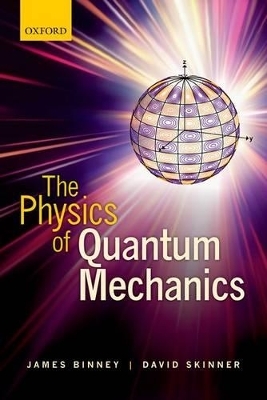
The Physics of Quantum Mechanics
Oxford University Press (Verlag)
978-0-19-968857-9 (ISBN)
The Physics of Quantum Mechanics aims to give students a good understanding of how quantum mechanics describes the material world. It shows that the theory follows naturally from the use of probability amplitudes to derive probabilities. It stresses that stationary states are unphysical mathematical abstractions that enable us to solve the theory's governing equation, the time-dependent Schroedinger equation. Every opportunity is taken to illustrate the emergence of the familiar classical, dynamical world through the quantum interference of stationary states. The text stresses the continuity between the quantum world and the classical world, which is merely an approximation to the quantum world.
The connections between observables, operators and transformations are clearly explained and the standard commutation rules derived from the properties of spacetime. A chapter is devoted to entanglement, quantum computation, density operators and their role in thermodynamics, and the measurement problem. Scattering phenomena, including the origin of radioactivity, are handled early on in the accessible context of one dimension, and at the end of the book with some rigour in three dimensions. Hydrogen and helium are discussed in some detail and it is shown that quantum mechanics enables us to understand the structure of the periodic table without engaging with the complexities of many-electron atoms.
Dirac notation is used from the outset and students are trained to move easily from one representation to another, choosing whichever representation is best suited to a particular problem. The mathematical prerequisites are no more than simple vector algebra, Taylor series expansion and the use of integrating factors to solve linear first order differential equations. Rigorous algebraic methods are preferred to the solution of partial differential equations.
James Binney has degrees from the universities of Cambridge and Oxford and has studied in the Albert Ludwigs Universitaet, Freiburg i. Breisgau. After three postdoctoral years in Princeton he joined the Physics faculty at Oxford and has there taught courses ranging from first-year mathematical methods, through statistical physics, quantum mechanics, general relativity, group theory and differential geometry and physics. He researches the structure, formation and dynamics of galaxies. For this work he has received the Maxwell Medal and the Dirac Medal from the Institute of Physics, the Dirk Brouwer Award from the American Astronomical Society and the Eddington Medal from the Royal Astronomical Society. He was elected a Fellow of the Royal Society in 2000. He is joint author of Galactic Dynamics (Princeton UP 1987, 2008), Galactic Astronomy (Princeton UP 1998) and The Theory of Critical Phenomena (Oxford UP 1992). David Skinner obtained his PhD from Oxford Physics and took postdoctoral positions in Oxford Maths, Perimeter and IAS before joining DAMTP, Cambridge. He is interested in quantum field theory, string theory and twistor theory.
1. Introduction ; 2. Operators, measurement and time evolution ; 3. Oscillators ; 4. Transformations & Observables ; 5. Motion in step potentials ; 6. Composite systems ; 7. Angular Momentum ; 8. Hydrogen ; 9. Motion in a magnetic field ; 10. Perturbation theory ; 11. Helium and the periodic table ; 12. Adiabatic principle ; 13. Scattering Theory ; Appendices
| Zusatzinfo | 75 b/w illustrations |
|---|---|
| Verlagsort | Oxford |
| Sprache | englisch |
| Maße | 156 x 234 mm |
| Gewicht | 620 g |
| Themenwelt | Naturwissenschaften ► Physik / Astronomie ► Atom- / Kern- / Molekularphysik |
| Naturwissenschaften ► Physik / Astronomie ► Quantenphysik | |
| ISBN-10 | 0-19-968857-5 / 0199688575 |
| ISBN-13 | 978-0-19-968857-9 / 9780199688579 |
| Zustand | Neuware |
| Informationen gemäß Produktsicherheitsverordnung (GPSR) | |
| Haben Sie eine Frage zum Produkt? |
aus dem Bereich


